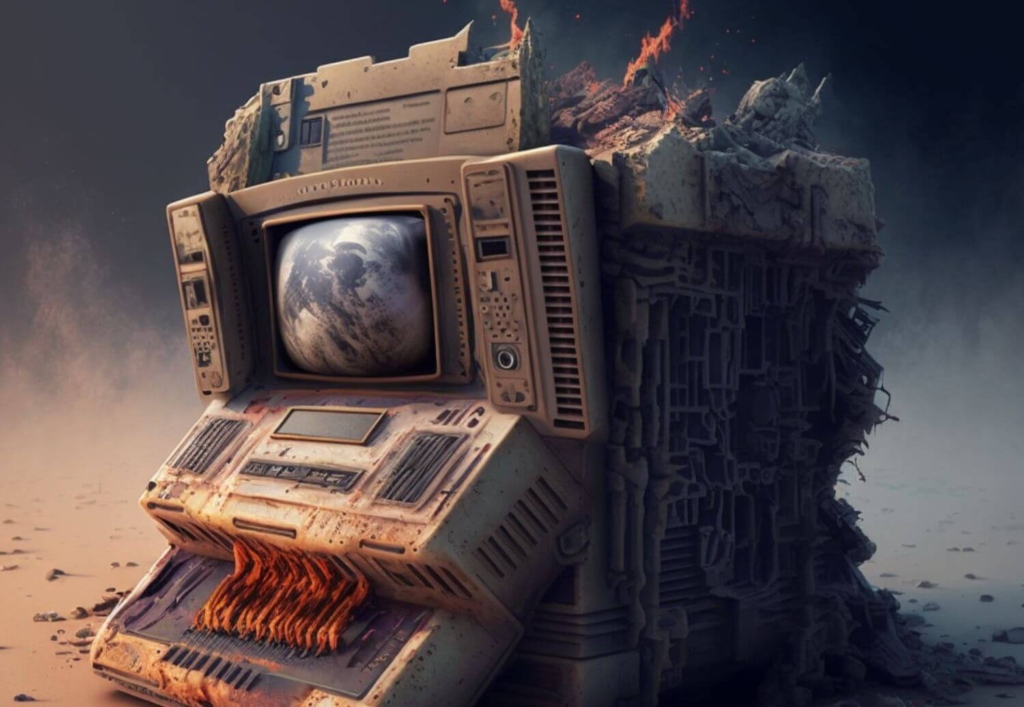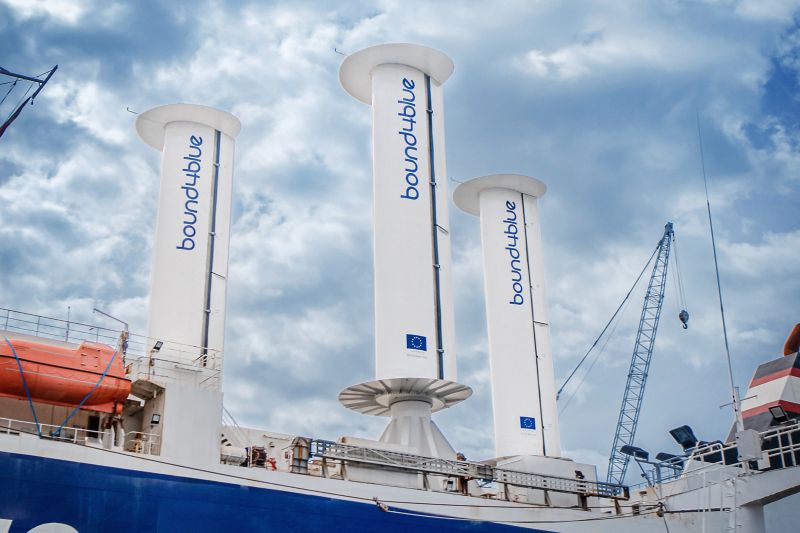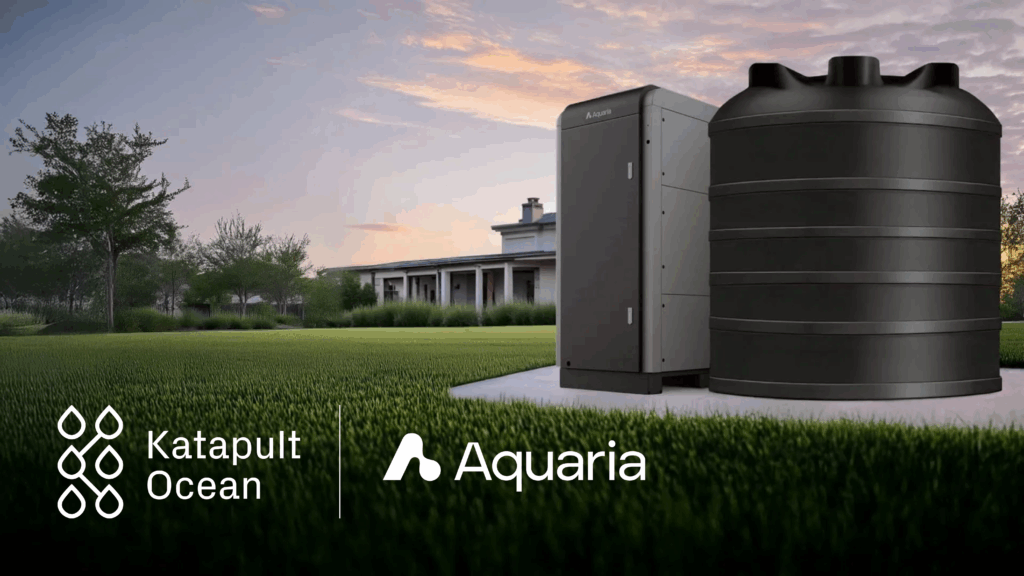03 – Technologies that will unf*ck the planet, part #1

I love satirical cartoons, they seem to capture things in ways words do not. I saw this great illustration the other day, maybe you saw it too? It was one of those Dilbert style drawings illustrating what looks like a small N.Y city skyline. Headed towards it is a gigantic tsunami building up, ready to engulf the entire city. The wave is named “Covid 19”. Next to it and towering twice the size, another wave. This one reads “Recession”. Next to that, a third wave. This time completely dwarfing the first wave, which reads “Climate change”. A tiny talking bubble appears coming out of the city skyline, “Be sure to wash your hands and all will be well”.
It’s a great picture of the last three years. Add a wave of “biodiversity collapse” and plain out “war”, and I think we’re pretty much on par. It’s been a gut wrenching U turn, and the markets are not responding well.
So far we have dropped 30-40% in traditional indexes such as the S&P500s and NASDAQ – a decline not seen since the Global Financial Crisis. A sudden trend of mass layoffs have begun, and venture tycoons like Andressen-Horowitz are telling founders to brace for investor slow-down and a prolonged drought that may very well last into the better half of 2025.
Software has a serious demand contraction problem. It’s likely that new business will sharply take a negative 50 percent hit over the coming years, and startups should expect the churn to be much higher (the number of SaaS subscriptions canceled). And because of layoffs across the board, SaaS customers are likely to reduce the number of seats they are paying. These three factors will send a devastating blow to the entire industry.
Crypto (or Digital Assets as we are calling it now) is racing towards the bottom of the Gartner hype-cycle where the ‘trough of disillusionment’ feels more like the “trough of deception”; one scandal replacing the next. The headwinds seem relentless, and it’s creating a problem for fund managers with a narrow investment thesis.
So yes, indeed, if Katapult was a B2B SaaS fund looking for the next major platform in ads, I would be very worried right now. The coming reckoning will be brutal, and it will flush out both funds and startups whose foundations have been too fixated on the blitzscaling-with-no-revenue and endless growth narrative. Luckily we chose differently.
Luckily, we chose a portfolio that includes atoms and molecules, real problems and founders who are motivated by the mission. The business opportunity that lies in fixing the planet, and everyone living on it. You see, that’s what a recession does; it resets to what matters.
Now, fixing the planet is no small feat. We are talking about the biggest recalibration in human history; going from a petroleum-based economy which has been the spine for wealth creation over the last 150 years, to a future mainly based on renewable energy, circular business models and sustainable materials. It is system change at an astronomical scale, touching every aspect of human life. At that level, you need political will, shift governmental & private action and technological solutions to drive change en masse.
So, where do we begin? Here’s a list of breakthroughs that we believe will form the bedrock of an entire new generation of markets, products and services. As part of our investment thesis, this drives a lot of our venture decisions.
Solar, wind and batteries
Solar is now the cheapest form of energy creation on the planet. No, really. Look it up. In 2022, it is cheaper than the operating cost of coal, nuclear, petroleum, and gas. Estimates also suggest SWB cost (solar, wind and batteries) will continue to drop 70% in the coming decade. Wind and solar power provided more than 10% of the entire world’s power generation for the first time last year, Bloomberg NEF reported. 50% of the new power generation added last year was from solar, 14% from wind.
Few have the cognitive surplus to understand the implications this has on the system as it will completely disrupt incumbents and upend entire value-chains. Cheap, abundant and clean solar changes water desalination, it changes waste, it changes manufacturing. It changes power, and yes indeed the whole geopolitical landscape. Does it seem utopian in 2023? Yes. Technologies with power-law dynamics in their cost-performance curves always do. Yet, SWB will be one of those ‘gradually, then suddenly’ kinds of deals, where after fact, it will all seem too obvious.
Carbon tracking, storage & utilization
You don’t have to be a rocket scientist to figure this one out – The Paris agreement means the removal of carbon in the atmosphere will become a trillion dollar business opportunity, spawning entirely new markets and value chains. The question is, how do you scale it from an energy efficiency perspective? The most obvious is pre and post-combustion capture and storage in geological formations but there is a whole host of technologies being developed to use the earth’s natural ways of storing carbon such as afforestation / reforestation, soil carbon sequestration and ocean fertilization.
The idea behind ocean fertilization is that by increasing the growth of phytoplankton, more CO2 will be removed from the atmosphere and stored in the oceans as organic matter. When phytoplankton die, their carbon-rich bodies sink to the bottom of the ocean, where they can be stored for long periods of time.
Soil carbon sequestration works in a similar way – When rainwater falls on the surface of silicate rocks, it reacts with the minerals in the rock, breaking them down into smaller pieces. The rainwater also carries dissolved carbon dioxide (CO2) with it, which reacts with the minerals in the rock to form bicarbonate ions (HCO3-). This reaction consumes CO2, effectively removing it from the atmosphere.
Tracking is another huge part of the equation. As we move towards a more sustainable future, checks and balances will need to be put in place both for governments, corporations, individuals and organizations to make sure we are meeting objectives and goals. This will usher a wave of software startups that are able to aggregate information and share them among all the different stakeholders.
Precision fermentation, alternative proteins and cultured meat
Unless you’ve been living under a rock, you would have noticed something very interesting just in the last couple of years. Hamburgers where the mince not only looks like meat, but smells like meat. And tastes like meat; but it is NOT actual meat.
The technology making it possible is heme, which is produced using a fermentation process involving genetically modified yeast which is then purified and added to a plant-based protein blend. Perhaps most interesting: The cost $/Kg curve of it is tracking at 100x improvement per decade, and we’re seeing applications to replicate fish, cheese, milk, chocolate and other food products increasing rapidly. This combined with cultured meat (using tissue-culture technology to basically grow meat) is set to completely disrupt a century-old industry that is taking up a lot of land and water resources to feed the world population.
Next up, let’s talk about the vastly untapped potential in our world’s oceans and technologies that are emerging within ocean energy systems, ocean organics and circular resources. Stay tuned.
Marcus Hølland Eikeland is Katapult’s Program Director and Partner. You can read Marcus’ earlier blog posts and more news from Katapult here.

